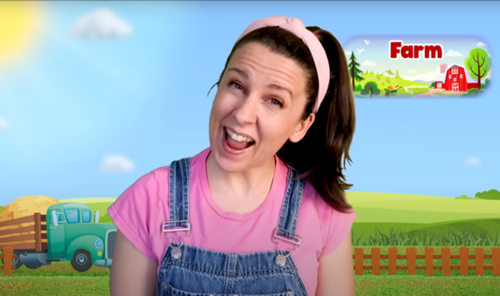
What's So Special About Sports Specialisation?
The pros and cons of playing one sport
By
Nathalie Heesom-Green

Background
Sports specialisation is the process through which an athlete dedicates themselves to a single sport year round, generally participating in that sport for multiple hours a week. The point of sports specialisation is to develop the specific skill set required to succeed in that sport, usually with the purpose of obtaining a scholarship or elite status. This, however, is not an achievable outcome for the majority of athletes that partake in sports specialisation, usually from a young age.
The goal for the majority of athletes, coaches and parents involved in sports specialisation is to achieve a specific level of success and the rewards that accompany it. College scholarship, contractual partnerships and elite status are generally the goals of sports specialisation from a young age, requiring the athlete to be sufficiently skilled to represent their school, company or country in exchange for the benefits of that status.
While this is a popular goal of many athletes, it is not easily achievable. College scholarships are a common motivator for young athletes but they are very rarely awarded. According to this report, “only 1.3% of athletes receive a full or partial athletic scholarship.” This doesn’t paint a particularly appealing picture to young athletes that dedicate their early adolescence to the purpose of achieving an athletic scholarship.
In our anticipated Global Kids Sports Report: Participation, we see that tweens participate in most sports between the ages of 9-to-10-years-old and tend to specialise when they reach 11- or 12-years-old. Tweens at this age generally dedicate their sporting hours to fewer than three sports throughout the year. From the same report, we see that tweens can spend up to almost 6 hours per week participating in sports, sometimes the same sport multiple times a week.
The question is, is sports specialisation the way to go, or does the future of sports participation look different to what we have seen before?
Sports Specialisation: what’s good?
The thought process behind sports specialisation follows the law of 10,000 hours: in order to become a superior athlete, intense specialised practice is required to be a successful athlete within one sport. This means that athletes dedicate themselves to practising the specific skill set required to participate in a sport, at the expense of participating in other sports.
For some technical sports, this is true: experts generally believe that sports such as figure skating and diving require greater dedication due to the specific technical skills needed to succeed within that sport. To achieve a higher calibre of these technically demanding skills, athletes must dedicate themselves to practising movement-specific skills such as double axel or pike position, as well as doing additional strength and conditioning exercises surrounding sports participation.
This means that young athletes learn dedication and drive. They have to be able to mentally understand the efforts and energy that they are being asked to place in their sports participation, something that coaches and parents must be able to explain. This allows for planning and investment into their future as an athlete. From this, young athletes can develop a good sense of themselves and high self-esteem. From the Global Kids Sports Report: Participation, we see that tweens really enjoy participating in organised sports because it’s fun: spending time with friends, winning and learning new skills are just a few of tweens favourite things about sports participation.
The other side of this story:
Sports specialisation has potential to offer young athletes a number of benefits: skill development, elite success, self-confidence and friendship. However, these are not a guaranteed outcome to sports specialisation and instead choosing one sport to participate in at a young age can have disadvantages to young athletes.
Sports specialisation consists of participating in the same sport multiple times a week, sometimes up to 6 hours. This could mean that athletes are completing the same technical movements and skills on repeat. For young athletes physiology, where bone density and muscle development has not reached the same maturity as adult athletes, there is some increased danger of injury as a result of repeat stress caused by sports participation. This is most prone to the joints such as the knee or hip as a result of excess running or jumping.
Injury as a result of overuse has the potential to damage a young athlete's future participation, as well as their mental state. When a young athlete’s sense of self is derived from their status within a single sport, or their participation within a team, they are in danger of losing some sense of self or confidence when they are no longer able to participate due to injury. This is particularly dangerous at the tween age range, as they generally have an uncertain sense of self to begin with.
In the Global Kids Sports Report: Participation we see that, amongst time and accessibility, the parents’ fear of injury poses as one of the greatest barriers of entry to sports for tween athletes. By ensuring a young athlete participates in a sufficiently broad portfolio of sports until they have reached physical maturity and their sports readiness is gauged appropriately, they are less likely to injure themselves as a result of repeat stress.
Sports specialisation also has the potential to limit the overall development of a young person as an athlete. By sticking to a single sport, young athletes are limited to the particular skills or tactics of that individual sport. As we explore in our Participation Report, we can see that tweens with access to a broader portfolio of sports participation have a greater sense of physical literacy and fitness.
Choosing a range of sports to participate in across the week / year allows tweens to move between social groups, move their body in different ways and understand the thought process between each sport. Playing rugby in the winter means you are part of a team and work on your hand-eye-coordination, while sailing in the summer allows for individual development and learning the technical skill of a skipper. This provides tweens with the opportunity to practise social and physical skills in a number of diverse environments.
Long-term athletic development benefits from a broader portfolio of sports participation, as athletes are able to draw on different experiences to inform their sports specialisation later on. For sports that do not require technical skill development for success, there are serious benefits to sports differentiation when deciding to specialise or not, especially when investing in the person behind the athlete.
In some cases, tweens may not be interested in playing more than one sport. As one tween we spoke with said, “because football is the best." What then?
It's important to note the difference between motivations: a line can be drawn between where sports participation changes from play into practice. This is the deciding factor when it comes to the risk of injury associated with sports specialisation. The purpose of participation shifts from play into practice, with greater intensity and longer hours.
If tweens do not have interest in diversifying their sports portfolio, it is up to the parents and coaches to manage their sporting activities to remain as playful as possible. In doing so, they constantly reassess the tweens’ sports readiness and thus can make the informed decision with the tween as to when to shift from play to practise in sports specialisation.
So what's next?
From research with tweens all around the world, we are seeing sports specialisation taking place at as young an age as 11- or 12-years-old. Participation at this age can peak at almost 6 hours a week, between fewer than three different sports. This presents sports specialisation as taking place before young athletes have the opportunity to physically mature. Instead, parents and coaches should gauge the child’s sport readiness for a particular sport to determine their participation level across the year.
In tandem with parents’ adverse attitude to injury risk and the potential developmental drawbacks of young sports specialisation, as well as tweens own identification of sports participation benefits, a broader portfolio of sports participation may be healthier and more beneficial to encourage sport participation.
Sports differentiation allows for reduced risk of injury, has the potential to overcome time and scheduling constraints and allows tweens to make friends and have fun across a variety of different environments. By facilitating a number of different sports in public areas across the week, sports organisers may encourage sports participation for tween athletes to establish a healthy, fun and lasting relationship with sports and physical movement.
For a greater breakdown of tweens’ sport participation sign up here to receive our Global Kids Sport Report: Participation on 25th of January. If you are more interested in the tweens’ practices as fans of sport, email maurice@we-are-family for more information regarding our Global Kids Sports Report: Fandom.


